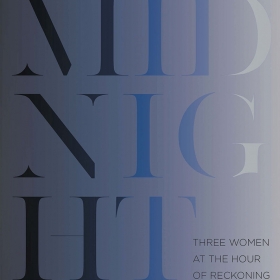In her new book, Victoria Shorr ’71 retells the lives of Jane Austen, Mary Shelley, and Joan of Arc. But this book, as the title Midnight suggests, has a special twist, as Shorr focuses on these women at what she calls “the hour of reckoning.”

Victoria Shorr ’71
Midnight: Three Women at the Hour of Reckoning
Norton
299 pages, $25.95
There are some stories that we never tire of hearing, some lives whose twists and turns continue to fascinate us even when we know how the story goes. In her new book, Victoria Shorr ’71 indulges our love of such stories three times over, retelling the lives of Jane Austen, Mary Shelley, and Joan of Arc. But this book, as the title Midnight suggests, has a special twist. Rather than tell each life from beginning to end, Shorr focuses on these women at what she calls “the hour of reckoning.” Here, then, we see Austen on the night she broke her engagement, a decision that sealed her financial dependence and also enabled her to write; Shelley, on the night she learns that her husband, the poet Percy Bysshe Shelley, has drowned; and Joan of Arc on the eve of her execution.
Seeing how others cope with difficulty can be a great balm during difficult times. And, if none of us is likely to face burning at the stake, Joan of Arc’s story still inspires. In the 19th century, when girls were often presented with ceremonial books about the lives of great women as school prizes, Joan of Arc’s life was one of the most commonly included. A century ago, suffragettes adopted the iconography of Saint Joan as inspiration for their struggle for the right to vote.
Shorr’s novelistic account of Joan’s struggles with her faith emphasizes details that resonate with today’s #MeToo moment. She emphasizes the fact that Joan cut her hair short and insisted on wearing trousers to avoid sexual assault, first from her fellow soldiers and later from the guards and priests who had access to her in captivity. Relying on a rich array of historical sources, Shorr focuses on the struggle Joan faced during her final days. Just before her death, Joan delayed execution by abjuring both her visions and her insistence on men’s clothing—the two heresies for which she was on trial—only to recant four days later. Shorr persuasively imagines the internal struggle of a young woman whose sacred visions wax and wane. She helps us see what it might have been like to want both to live and to be true to her purpose, desires made incompatible by her captors.
Joan of Arc’s midnight is a decision in extremis. The challenges that Mary Shelley and Jane Austen faced are more familiar ones, but no less interesting for that. Mary Shelley’s story of early widowhood is so complicated and heart-rending that it is hard to summarize. Indeed, at times, even Shorr gets a little tangled in the details of Percy’s many infidelities—he was married when they eloped, and they left England with Mary’s stepsister, with whom Percy also had an affair. Add to this many difficult pregnancies, miscarriages, and the infant deaths of three of her four children, and the griefs multiply. Shorr cuts through generations of biographers who wrote off Mary as a drag, showing us instead a brave young woman, far from home, enduring her grief.
Jane Austen’s refusal of a suitable, if uninspiring, marriage proposal must have been baffling at the time. Shorr puts us in that moment of decision, in 1802, before any of Austen’s novels had been published, asking us to imagine the courage that it might have taken for an unpublished woman writer to hold fast to her dreams.
Shorr’s Midnight is a moving read about how three famous women in the past lived through their own difficult times. Like other such collections of women’s lives, it promises inspiration, and the emphasis on three very different moments of crisis seems well-suited for our own challenging moment and for any reader going through her own personal midnight.
Fernald is professor of English at Fordham University in New York City.


